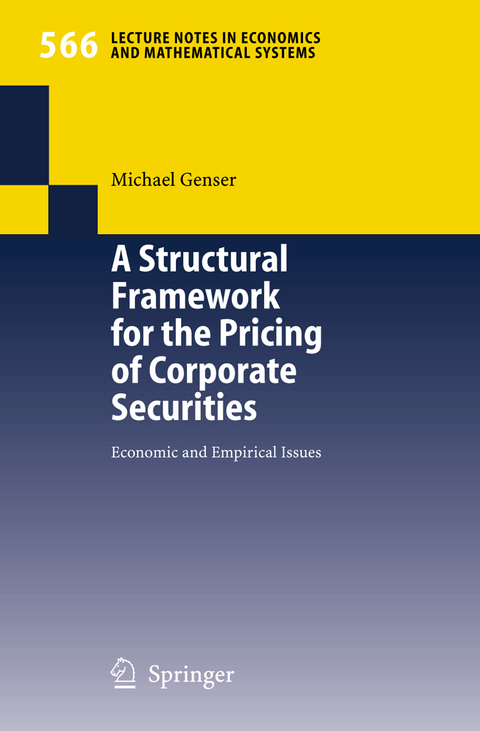
A Structural Framework for the Pricing of Corporate Securities
Economic and Empirical Issues
Seiten
2005
|
2006
Springer Berlin (Verlag)
978-3-540-28683-7 (ISBN)
Springer Berlin (Verlag)
978-3-540-28683-7 (ISBN)
In the last few years, a re?ned pricing of corporate securities has come intofocusofacademicsandpractitioners.Asempiricalresearchshowed, traditionalassetpricingmodelscouldnotpricecorporatesecuritiess- ?ciently well. Time series properties of quoted securities were di?cult to replicate. In the search for more advanced models that capture the empirical ?ndings, researchers followed two approaches. The ?rst stream of - search ?tted the time series properties of corporate securities directly. Werefertothisclassofmodelsasbeingofreducedform.Securityprices are assumed to follow more advanced stochastic models, in particular 1 models withe.g. non-constant volatility. All studiesofthistypedonot consider the economics of the issuing companies but simply assume a stochastic behavior of the security or its state variables. In contrast, a second, economic literature developed by studying the ?rm. We call these kinds of models structural because the limited liability of equity holders is modeled explicitly as a function of ?rm value. One problem of the reduced form approach is its di?culty of int- pretation in an economic sense. Being technically advanced, reduced form models often lack an intuitive economic model and especially d- guise the economic assumptions. If security pricing is the only purpose of the exercise, we might not need an economic model. However, if we wanttounderstandpricemovements,aseriouslinkwiththeunderlying economics appears important. Thecreditriskliteratureevenadoptedthisparticularterminologyto 2 categorize its models. Whereas reduced form models take each corpo- 1 See e.g. Stein and Stein (1991) for a stochastic volatility model and Heston and Nandi (2000) on GARCH option pricing.
The Corporate Securities Framework.- ABM- and GBM-EBIT-Models.- Numerical Illustration of the ABM- and GBM-Model.- Empirical Test of the EBIT-Based Credit Risk Model.- Concluding Remarks.
| Erscheint lt. Verlag | 26.10.2005 |
|---|---|
| Reihe/Serie | Lecture Notes in Economics and Mathematical Systems |
| Zusatzinfo | XX, 188 p. |
| Verlagsort | Berlin |
| Sprache | englisch |
| Maße | 152 x 229 mm |
| Gewicht | 325 g |
| Themenwelt | Mathematik / Informatik ► Mathematik ► Angewandte Mathematik |
| Wirtschaft ► Betriebswirtschaft / Management ► Finanzierung | |
| Wirtschaft ► Volkswirtschaftslehre ► Ökonometrie | |
| Schlagworte | Corporate securities • Corporate security prices • credit risk • firm value • Firm value models • Kreditrisiko • Option Valuation • Quantitative Finance |
| ISBN-10 | 3-540-28683-7 / 3540286837 |
| ISBN-13 | 978-3-540-28683-7 / 9783540286837 |
| Zustand | Neuware |
| Haben Sie eine Frage zum Produkt? |
Mehr entdecken
aus dem Bereich
aus dem Bereich
Buch | Softcover (2024)
Springer Vieweg (Verlag)
CHF 62,95
Anwendungen und Theorie von Funktionen, Distributionen und Tensoren
Buch | Softcover (2023)
De Gruyter Oldenbourg (Verlag)
CHF 97,90


